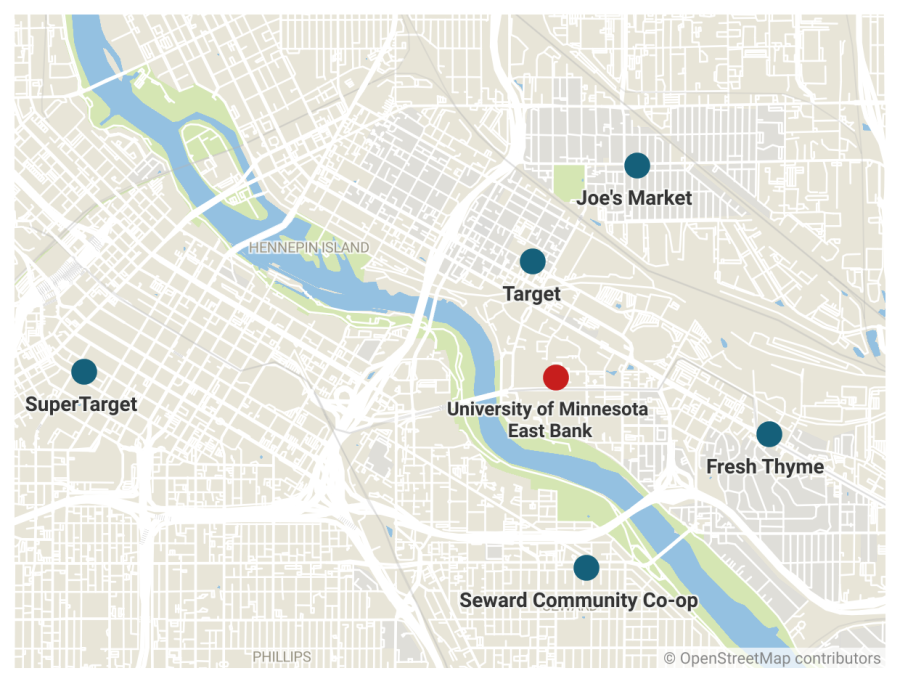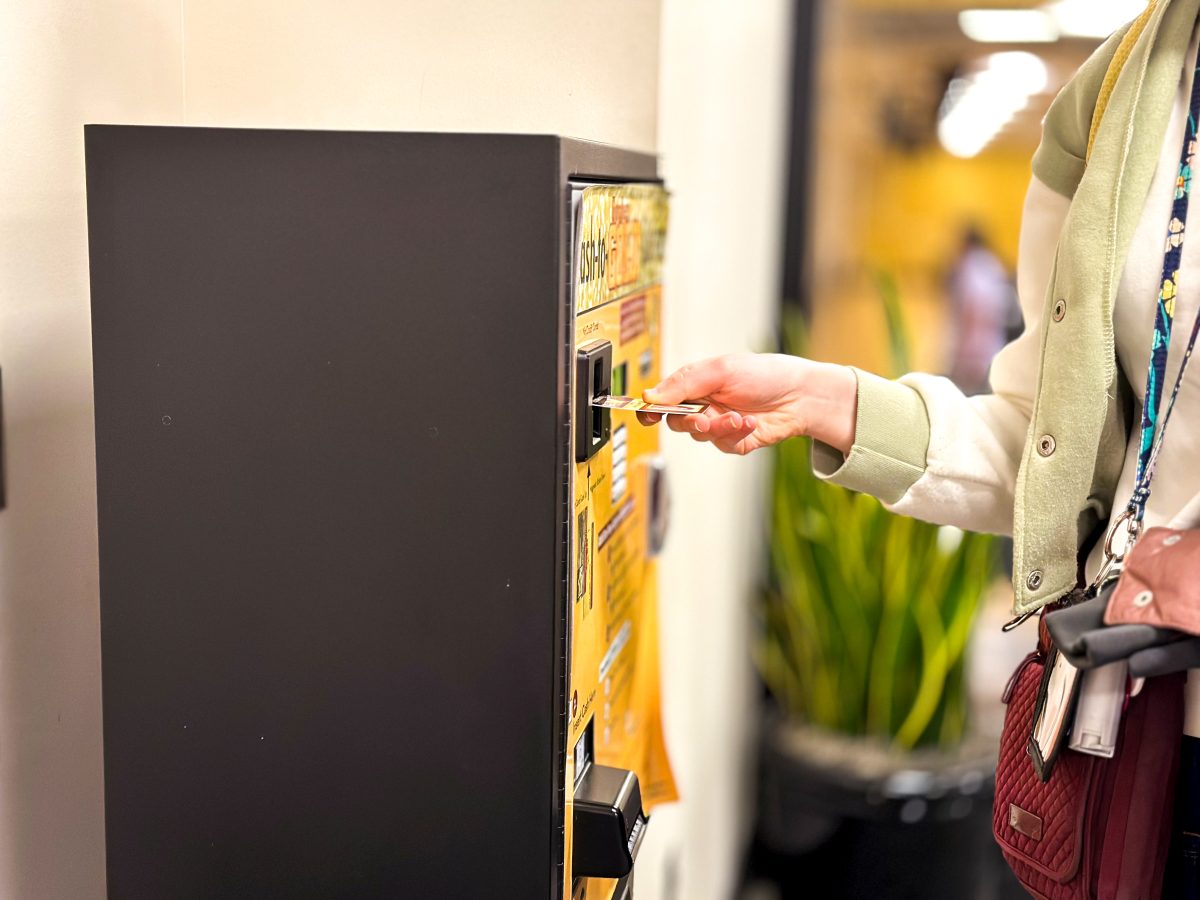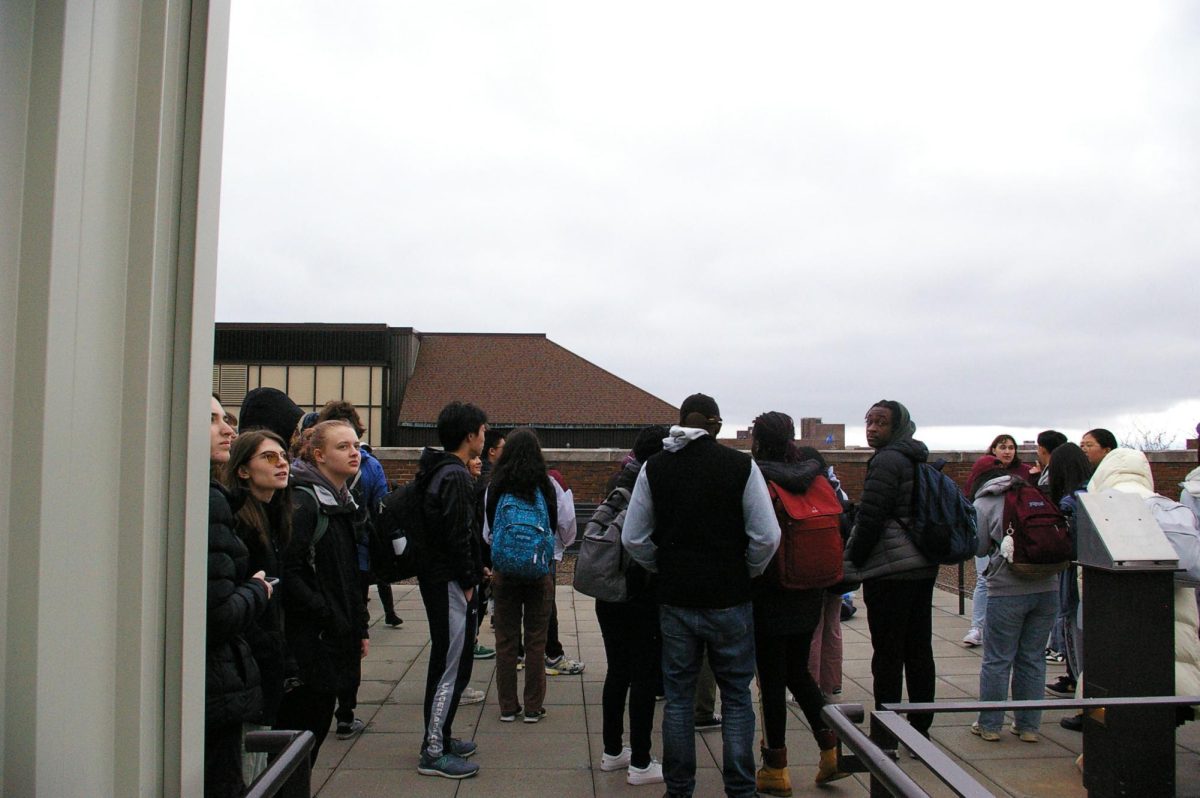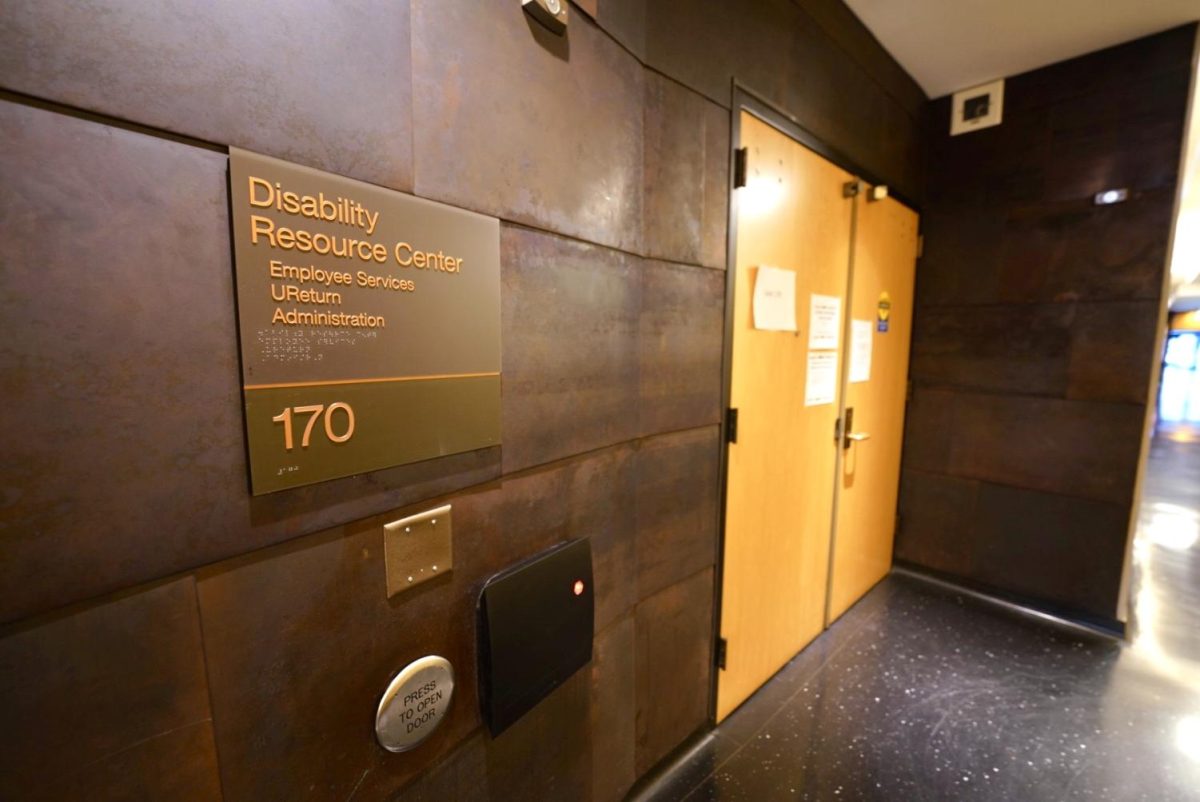University of Minnesota students and faculty from the Food, Science and Nutrition Department have been recently discussing the food desert on campus and reviewing current University programs to address food insecurity and provide recommendations for the future.
A food desert is defined by the United States Department of Agriculture as a low-income area where a significant number of the population is one mile or more from a supermarket or large grocery store. According to these specifications, the University campuses and the outlying neighborhoods, such as Como and Marcy-Holmes, are considered food deserts.
The food desert on campus perpetuates food insecurity and demonstrates the University’s commitment to money over student health, said Maya Ezekiel, a member of Boynton Health’s Student Nutrition Advocacy Collaborative (SNAC) and a nutrition major.
Boynton Health attempts to address food insecurity on campus with the Nutritious U food pantry, a mobile food shelf, and student Supplemental Nutrition Assistance Program benefit support. Additionally, the Mobile Market is a grocery store within a bus located by Coffman Union that offers affordable foods for purchase and is returning to campus on Oct. 17.
Nutritious U recognizes food insecurity is both a financial and accessibility issue, said Karin Onarheim, a Nutritious U advisor and Boynton Health promotion specialist. Emergency programs to support students now and the preventive programs provided will offer a variety of solutions to student food insecurity, Onarheim said.
Despite the programs offered through Boynton, some students feel as though the efforts are not enough.
“Nutritious U is an emergency program only offered at the end of the month, I need to eat every day,” Ezekiel said.
Ezekiel said she thinks the University can take action to decrease food insecurity on campus and replenish the food desert by building grocery stores, incorporating free bus trips to local food sources and creating food accessibility education for all students.
“[Nutritious U] didn’t seem like they were passionate about trying to address these issues of food security with the students,” Jason Castillo, a fourth-year student majoring in food science and nutrition (FSN), said.
To further address food insecurity concerns on campus, four students in FSN — Castillo, Maddy Dunski, Scott Hoang and Kashie Kong — took the initiative in spring 2022 to lay the foundation for a campus grocery store: Goldy’s Grocery.
Despite their best efforts, the project was unable to be funded and the store never opened.
“The biggest issue was working with the University and trying to get them to see that having a grocery store was a benefit and a responsibility for the University to do,” Castillo said. “We have the infrastructure to do something like a grocery store and we just don’t take the opportunity to do it, and I think it really speaks to where the values of the University are.”
A recent development in food accessibility came with the University’s decision to approve the Universal Transit Pass.
“I think the Universal Transit Pass is a huge win,” Castillo said. “That does genuinely increase access to students because now they have transportation to grocery stores around the area that are affordable.”
Still, some students and professors said they think more needs to be done.
“Ultimately, we thought nutritious food is a basic human right that is not being met here on the UMN campus,” said Hoang
The University is placed in the middle of Minneapolis. The city is known for being home to many Fortune 500 companies, like General Mills, that could help lessen food insecurity on campus, said FSN Department associate professor Leonard Marquart.
“Whether it’s a store, a different way to provide food service or students becoming armed in different ways to prepare food on their own … there are plenty of ways to address [food insecurity],” Marquart said. “There needs to be a concerted effort by administration, faculty and interested parties relative to the University.”
Marquart said he thinks another solution is to create a link that connects student views on food access and providing food to campus decision-makers.
For example, starting a club, having a student advisor or holding active participation events in which administrators and faculty would face the same experiences as students would in regard to accessing food.
“If you don’t have experiences that allow you to have the empathy and compassion to identify with students in a way that allows administration to make the right decisions, how can we possibly operate as a University in the 21st century,” Marquart said. “As seriously as we take academics, we need to take into consideration the welfare of students.”























